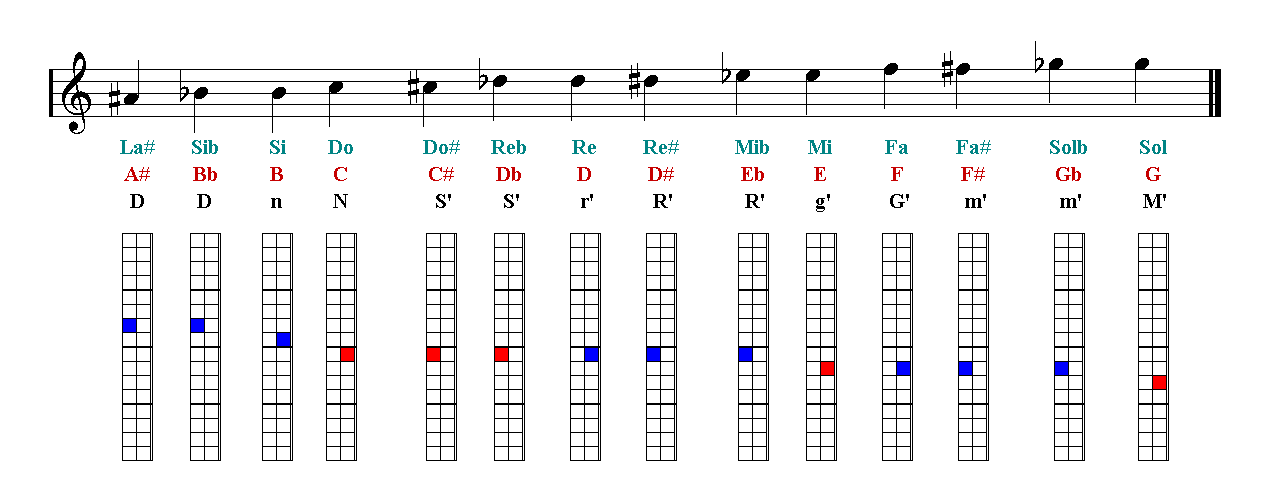

This is the simplest method I know for working out ukulele fretboard notes, and I’d like to hear a simpler way if one exists.Īs you play more, you’ll find you instinctively know certain ‘well-trodden’ areas of the fretboard more than others.Ī useful thing to note is that at the fifth and seventh fret you get four natural notes in a line (at the fifth CFAD, at the seventh DGBE). Here are all the notes on the fretboard for your reference. They have seven pitches, and are called diatonic scales. On the G string, you’ll find the D at the seventh fret A given sharp note (indicated by a ) can also be expressed as the flat of the note above it (indicated by a b) so the chromatic scale can also be written like this: A, Bb, B, C, Db, D, Eb, E, F, Gb, G, Ab The major and minor scale and modes are subsets of this twelve-pitch collection.So let’s say you wanted to find a D note.

Now you know how the chromatic scale works, you can simply go up the fretboard using the alphabet (A to G) to find each natural note. It’s beyond the realms of this article to explain why, but just accept for now that that’s how it works! Walk Your Way Up the Fretboard

That’s because between the E/F and B/C there isn’t one. Notice that between E and F notes, and between B and C there are none of these ‘in-between’ notes? Those ‘in-between’ notes are called sharps (#) or flats (b), which are two names for the same note. If you have a piano handy, this would be like playing every white and black key in order between two C notes.


 0 kommentar(er)
0 kommentar(er)
